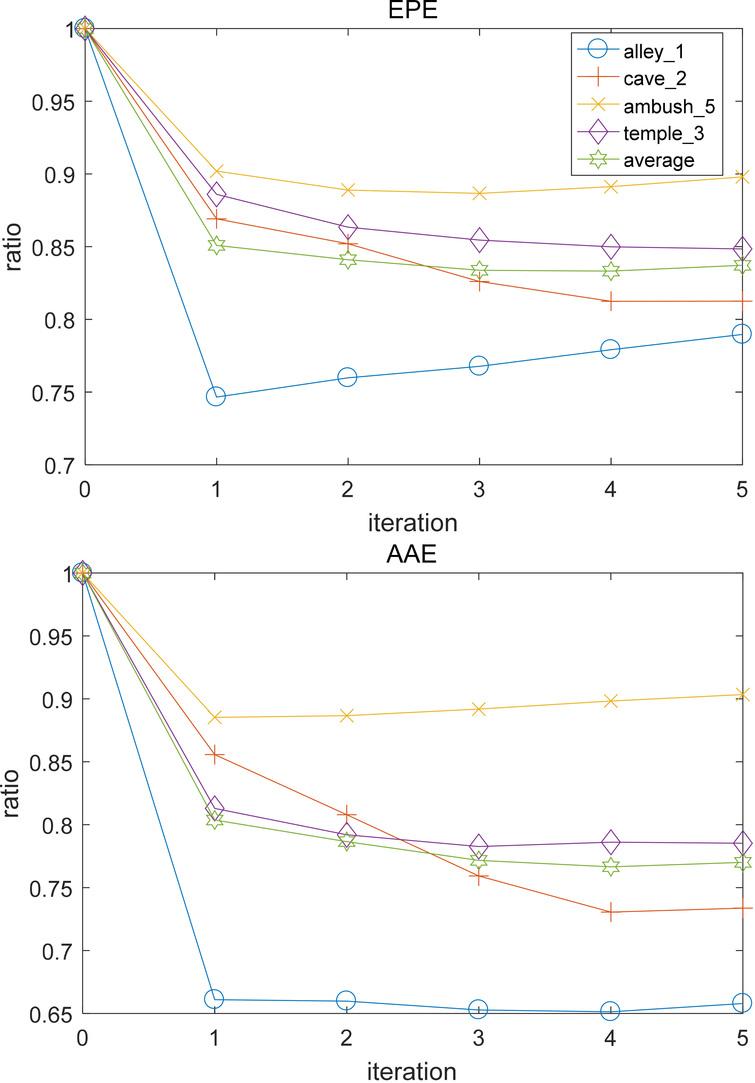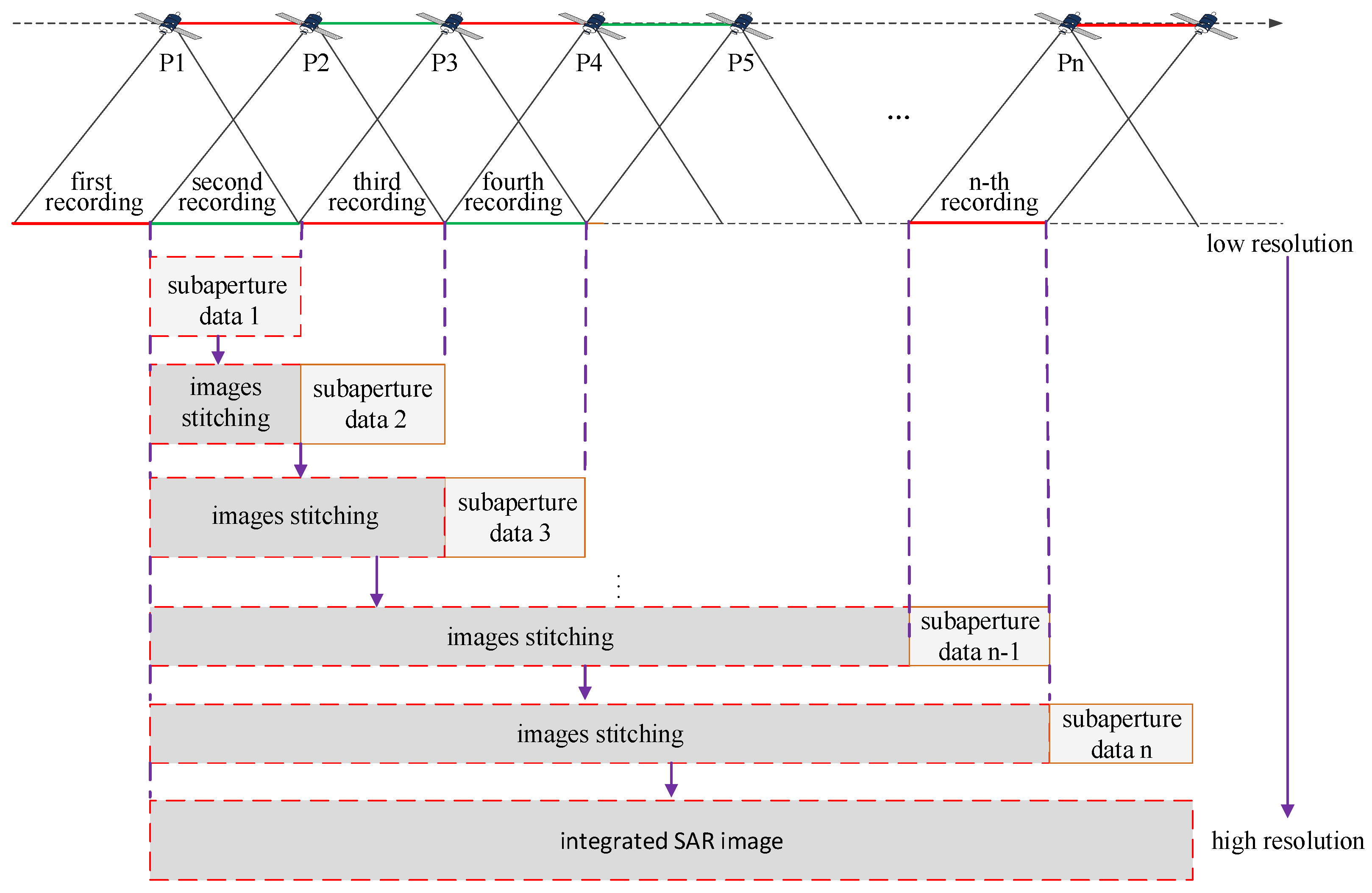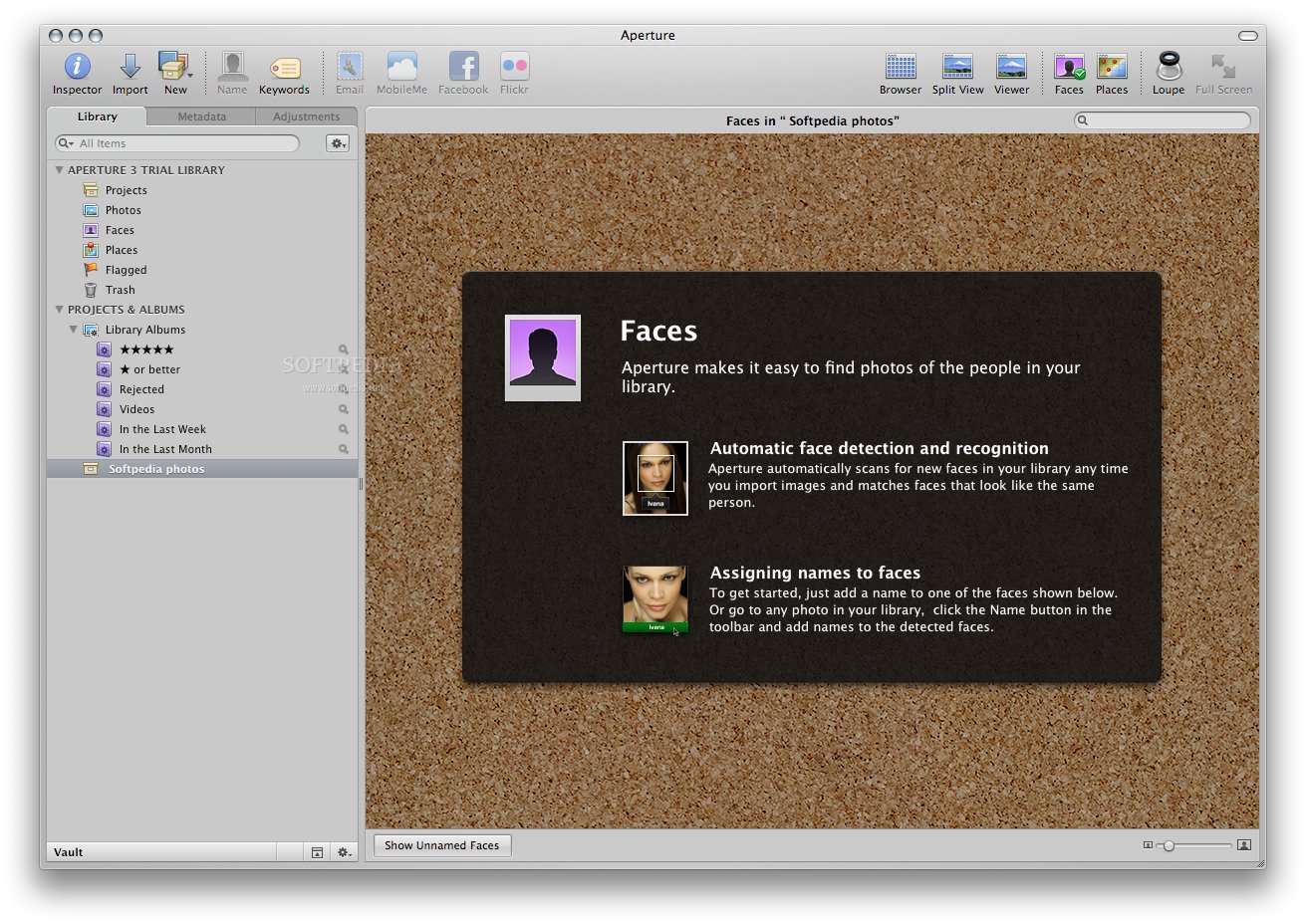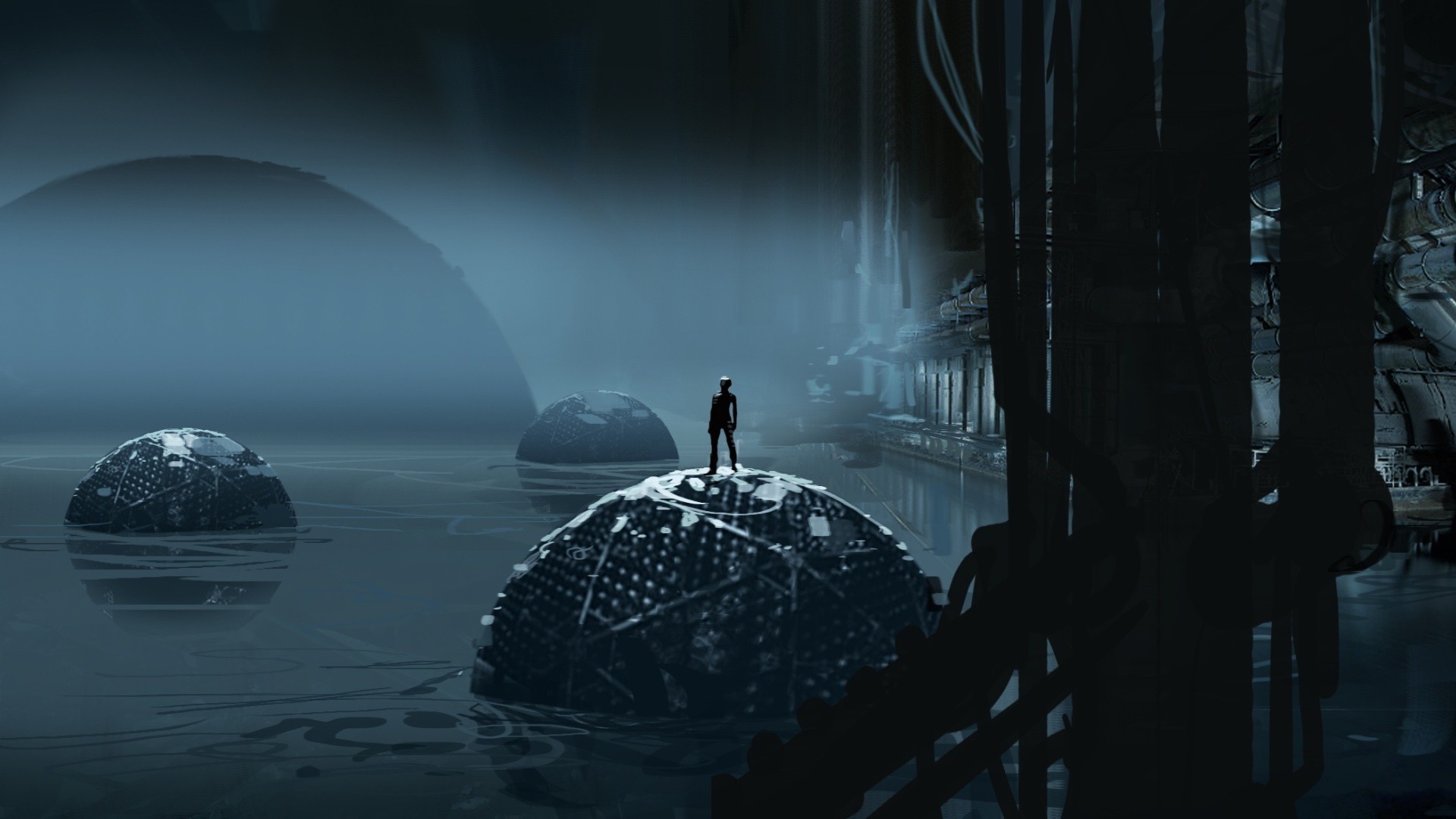Sometimes the same number is included on several scales; for example, an aperture of f /1.2 may be used in either a half-stop or a one-third-stop system; sometimes f /1.3 and f /3.2 and other differences are used for the one-third stop scale.
by David Kriege and Richard Berry,
6' by 9' inches, 496 pages, hardbound, 179 pictures,
88 drawings and 34 tables.
$29.95
About this book:
- With the availability of the option to delete photos in Aperture too, users will be able to have a better run-time control on their photo streams. This new update of Aperture, termed Aperture 3.2.3, also takes care of a number of other problems such as performance and stability issues.
- Apple releases Aperture 3.2.3 and Epson Printer Driver update. Apple's Aperture photo management tool can now be used to remove photos from iCloud's Photo Stream service.
The Dobsonian Telescope, A Practical Manual for Building Large Aperture Telescopes tells how you can build a state-of-the-art Dobsonian telescope using readily available materials and supplies. Every step of construction is detailed in photographs and diagrams, and the underlying ideas are carefully explained. As a result of this three-year collaboration between authors David Kriege and Richard Berry, experienced and well-known telescope makers, you now have the opportunity to build a high-performance telescope from 14 inches to 40 inches aperture based on the thoroughly tested designs described in this book.
The Dobsonian telescope takes its name from the astronomer/philosopher John Dobson, who introduced the concept of inexpensive, large-aperture telescopes to astronomy. Amateur astronomers at the time were so amazed that a telescope built from simple, inexpensive materials performed so well that they could hardly believe their eyes. As home-built Dobsonians started showing up at star parties across the nation and people saw what Dobsonians could do, the word spread. In just a few years, the Dobsonian revolution swept the world.
Aperture 3.2.3 -
Since those early telescopes, Dobsonians have improved dramatically. An entire generation of amateur telescope makers contributed their best insights and refinements to Dobson's original design. Today's Dobsonians are larger, lighter, and more precise than ever before. For example, it is possible to build a telescope of 20 inches aperture that is compact enough to transport in a hatchback automobile, yet takes only ten minutes to set up at a remote, dark-sky observing site.
Deep-sky observers especially appreciate Dobsonian telescopes. With the 20-inch (50 centimeter) aperture that the authors recommend for first-time Dobsonian builders, hundreds of globular clusters, thousands of nebulae, and tens of thousands of galaxies are visible through the eyepiece. Planetary observers have discovered that from good observing sites, Dobsonians deliver breathtaking performance on the moon and planets. For the casual stargazer, familiar objects like the Hercules Cluster, the Great Nebula in Orion, the Lagoon Nebula, and the galaxies of the Virgo Cluster are an entirely new experience.

Here are some of the topics covered in this book:
- Deciding what size telescope will suit your needs
- Ordering optics for a large Dobsonian
- Understanding plywood and how to use it properly
- Making a flotation cell to support the primary mirror
- Figuring how long to cut the poles for the truss tube
- Constructing precision truss tube sockets
- Performing torque analysis for first-time balance
- Installing precision digital setting circles
- Setting up and taking down the telescope
- How to collimate your optics correctly
Whether you have never observed before or whether you have been an amateur astronomer all your life, you will benefit from the hands-on familiarity and experience in amateur astronomy and telescope making that the authors bring to this book.

From The Reviewers

This bookis full of exceptionally useful advice and ideas, and is not only for those planning to build a telescope from scratch, but for anyone with a Dobsonian telescope of whatever design, who wants to see how they could improve its workings.
—Astronomy & Space magazine

If you ever wanted to build a really large telescope, the cornucopia of information the The Dobsonian Telescope will prove indispensable. Overall The Dobsonian Telescope is a terrific volume and wonderful accomplishment with little to criticize. It belongs on the shelf of every amateur telescope maker, and for that matter every Dobsonian owner. With its whimsical style and thorough treatment of the subject the book is destine to become a classic along with Albert Ingalls's Amateur Telescope Making and Jean Texereau's How to Make a Telescope.
—Sky & Telescope magazine

. Table of Contents
Chapter 1 Large Aperture Dobsonians
1.1 Why Dobsonians Are Newtonians
1.2 How Dobsonians Work
1.3 The History of the Dobsonian Telescope
1.3.1 John Dobson Invents the Dobsonian
1.3.2 The Dobsonian Revolution
1.3.4 The Second Dobsonian Revolution
1.4 The Dobsonian in Your Future
Chapter 2 Planning Your Telescope
2.1 Non-Telescopic Telescope Considerations
2.2 Tough Telescopic Considerations
2.2.1 Telescope Aperture Considerations
2.2.2 Are You Obsessed?
2.3 How To Get Started
Chapter 3 Engineering the Dobsonian
3.1 Engineering for Performance
3.2 Statics: How to Make a Stiff Telescope
3.2.1 Engineering Terms
3.2.2 The Moment of Inertia
3.2.3 Elastic Deformation
3.2.4 The Strength of Materials
3.2.5 Stiffness of a Truss Pole
3.2.5.1 Flexure in the Rocker Box
3.2.5.2 Flexure of a Telescope Mirror
3.2.5.3 Why Simple Scaling Doesn't Work
3.2.6 Dobsonian Dynamics: How Dobsonians Move
3.2.6.1 Balancing a Dobsonian
3.2.7 Friction in a Dobsonian
3.2.7.1 Friction Defined
3.2.7.2 Dobsonian Friction
3.2.7.3 Curing Stiction
3.3 Materials for Telescopes
3.3.1 Wood
3.3.1.1 Wood Is a Natural, Organic Composite
3.3.1.2 Wood Is Orthotropic
3.3.1.3 Selecting Wood
3.3.2 Aluminum
3.3.3 Teflon
3.3.4 Plastic Laminates
3.3.4.1 'Ebony Star' and 'Stardust' Laminates
3.3.4.2 Glassboard
3.3.4.3 Put Car Wax on Laminates
3.4 Protective Coatings
Chapter 4 Optics for Dobsonians
4.1 Basic Newtonian Optics
4.2 Choosing the Mirror
4.2.1 Choice 1: What Aperture?
4.2.2 Choice 2: What Focal Ratio?
4.2.3 Choice 3: Make or Buy?
4.2.4 Choice 4: What Glass?
4.2.5 Choice 5: Cut Sheet or Molded Blanks?
4.2.6 Choice 6: Fine or Precision Annealed?
4.2.7 Choice 7: How Thick?
4.2.8 Choice 8: Blanchard Ground?
4.2.9 Choice 9: What Coatings?
4.2.10 Choice 10: Optical Quality
4.3 Thinking About Eyepieces
4.4 Thinking About the Focuser
4.5 Sizing the Secondary Mirror
4.6 To Offset or Not to Offset?
4.7 Testing Telescope Optics
4.8 What To Do If You Don't Like a Mirror
Chapter 5 The Primary Mirror Cell
5.1 The Flotation System and the Sling
5.1.1 Flotation in Theory
5.1.2 Flotation in Practice
5.2 Building the Flotation System
5.2.1 Flotation System Design
5.2.1.1 Material for Bars and Triangles
5.2.1.2 Flotation System Pads
5.2.1.3 Build the Cell Subassemblies
5.3 The Tailgate
5.3.1 Evolution of the Tailgate
5.3.2 The Open-Frame Tailgate
5.3.3 Tailgate Layouts
5.3.4 Cutting Tailgate Materials
5.3.5 Drill Holes Before Welding
5.3.6 Weld Using a Jig
5.4 Mount the Tailgate in the Mirror Box
5.4.1 Collimation Bolts
5.4.2 Flotation System Hardware
5.4.3 The Sling and Split Bolts
5.4.4 Side Pins
Chapter 6 The Secondary Cage
6.1 Dimensioning the Secondary Cage
6.1.1 The Truss-Tube Advantage
6.1.2 The Inside Diameter of the Secondary Cage
6.2 Constructing the Secondary Cage
6.2.1 Order the Spider and Secondary Holder, and Focuser
6.2.2 Cut the Rings
6.2.3 Make Three Rings for 'The Big Ones'
6.2.4 Drill the Strut Seats
6.2.5 Make the Struts
6.2.6 Attach the Struts to the Rings
6.2.7 The Focuser Board
6.2.8 Install the Kydex Light Baffle
6.3 Connecting Ring for 'The Big Ones'
6.4 Install the Hardware
6.4.1 Install the Focuser
Chapter 7 Building the Mirror Box
7.1 Holding It All Together
7.1.1 Why the Mirror Box is Stubby
7.2 Mirror Box Materials
7.3 Designing the Mirror Box
7.3.1 Height and Width of the Mirror Box
7.3.2 How Balance Affects the Mirror Box
7.3.3 Calculating the Balance Point
7.3.4 The Depth of the Mirror Box
7.4 Balancing the Telescope
7.5 Split Blocks for the Mirror Box
7.6 The Side Bearings
7.6.1 Making the Mirror Box
7.6.2 Cutting the Sides
7.6.3 The Light Baffle
7.6.4 Assembling the Mirror Box
7.6.5 Side Bearing Dimensions
7.6.6 Bonding Flat Panels of Plywood
7.6.7 Constructing the Side Bearings
7.6.8 Placing the Side Bearings
7.6.9 Mounting the Side Bearings
7.7 To Shortcut or Not To Shortcut?
7.8 The Dust Cover
Chapter 8 The Truss Tube
8.1 How to Build a Serious Truss Tube
8.1.1 Flexure in Truss Poles
8.1.2 The Diameter of the Truss Poles
8.1.3 The Length of the Truss Poles
8.2 Attaching Truss Poles to the Mirror Box
8.2.1 Overview of Pole Sockets
8.2.2 Wooden Split-Block Sockets
8.2.2.1 How to Make Split-Block Sockets
8.2.2.2 Simplified Split Block Sockets
8.2.2.3 Fancy Cam-Action Pole Sockets
8.2.2.4 Strap and Channel Sockets
8.3 How to Align Truss Pole Sockets
8.4 Attaching Truss Poles to the Secondary Cage
8.4.1 The Crushed Tube Method
8.4.2 The Threaded-Insert Method
8.4.3 The Offset-Bracket Method
8.4.4 The Seats and Wedges Method
8.4.4.1 Making Pole Seats
8.4.4.2 Making Pole Wedges
Chapter 9 Bearings
9.1 How Dobsonian Bearings Work
9.1.1 What is Friction?
9.1.2 Friction in the Altitude Bearings
9.1.3 Friction in the Azimuth Bearings
Chapter 10 The Rocker and Ground Board
10.1 Sizing the Rocker
10.2 Rocker Construction
10.2.1 Ground Board
10.2.2 Ground Boards for 'The Big Ones'
10.3 Constructing the Ground Board
10.3.1 The Azimuth Pivot
10.3.2 How to Make the Pivot Bolt
10.3.3 Installing the Pivot Bolt
10.3.4 Installing Teflon Bearing Pads
10.3.4.1 Calculating the Size of the Altitude Bearing Pads
10.3.4.2 Calculating the Size of the Azimuth Bearing Pads
10.4 A Handy Option: Bearing Locks
10.5 Handles for Portability
10.5.1 'It Rolls On Air'
10.5.2 Attaching Handles to the Rocker
10.6 Handling the Big Ones
Chapter 11 Assembly and Troubleshooting
11.1 Last-Minute Preparations
11.2 Installing the Optics
11.2.1 Center-Dot the Primary
11.2.2 Center Dot the Secondary Mirror
11.2.3 Install the Primary Mirror
11.2.4 Install the Secondary Mirror
11.2.5 Adjust the Sling
11.2.6 Collimate the Optics
11.3 Set-Up, Use, and Take-Down
11.3.1 Set Up
11.3.2 Using the Telescope
11.3.2.1 Balance
11.3.2.2 Bearing Surfaces
11.3.2.3 Dew
11.3.2.4 Ventilation
11.3.2.5 Safety Precautions
11.3.3 Take-Down
11.4 Cleaning the Optics
11.5 Troubleshooting
11.5.1 Too Little Focus In-Travel
11.5.2 Sticking Poles and Blocks
11.5.3 Telescopes and Moisture
Chapter 12 Using Big Dobsonians
12.1 Eyepieces
12.2 Filters
12.3 Finders
12.3.1 The Telrad® Finder
12.3.2 Finder Telescopes
12.3.3 Get Two Finders
12.3.4 Jumbo Finders
12.3.5 Digital Setting Circles
12.4 Electrical Accessories
12.4.1 Dew Zappers
12.4.2 Heat Ropes
12.4.3 Portable 12-Volt Power
12.4.4 Marine Batteries
12.4.5 Power on the Secondary Cage
12.5 Keeping Warm and Dry
12.5.1 Warm Clothing
12.5.2 Keep Warm with Heat Packs
12.6 Eliminating Stray Light
12.6.1 The Light Shroud
12.6.1.1 Sewing a Shroud
12.6.1.2 Installing the Shroud
12.6.2 Focuser Baffling
12.6.3 The External Light Baffle
12.6.4 The Tailgate Cover
12.7 Telescope Covers
12.7.1 Mirror Box Dust Cover
12.7.2 Hat Box for the Secondary Cage
12.7.3 Secondary Mirror Cover
12.7.4 The Telescope Cover
12.8 Dark Observing Sites
12.8.1 Why You Need a Dark Site
12.8.2 Site Selection
12.8.3 Human Factors
Chapter 13 Epilog: Making a Small Telescope
13.1 Materials You Need
13.2 Overview of Construction
13.3 Begin with the Tube
13.3.1 The Primary Mirror Cell
13.3.2 Locate the Mirror Cell
13.3.3 Finish the Tube
13.3.4 Add End Rings
13.3.5 Assemble the Tube
13.4 The Mounting
13.4.1 Build the Tube Cradle
13.4.2 Side Bearings
13.4.3 Locate the Tube Balance Point
13.4.4 Construct the Rocker
13.4.5 Make the Ground Board
Appendix A Wood as a Structural Material
A.1 The Properties of Plywood
A.1.1 Types of Plywood
A.1.2 The Stiffness of Plywood
A.2 Selecting Plywood for Telescopes
A.2.1 Hardwood Veneer Hardwood Core Plywoods (HVHC)
A.2.2 Hardwood Veneer Softwood Core Plywoods (HVSC)
A.2.3 Softwood Veneer Softwood Core Plywoods (SVSC)
A.2.4 Particle Board
Appendix B Grinding, Polishing, and Figuring Large, Thin Mirrors
B.1 Obtaining a Mirror Blank
B.1.1 Porthole Glass: the Classic Choice
B.1.2 Pyrex Sheet Glass
B.1.3 Choose the Mirror Diameter
B.1.4 Choose the Mirror Thickness
B.1.5 Choose the Focal Ratio
B.2 Grinding Tools
B.2.1 Solid and Built-up Tools
B.2.2 Segmented Tools
B.3 Prepare a Suitable Work Area
B.4 Preparing for Grinding
B.4.1 Facing the Blank
B.4.2 How to Prevent Astigmatism
B.4.3 Bevel the Edge
B.4.4 Grinding Strokes
B.5 Rough Grinding
B.6 Fine Grinding
B.6.1 Fine Abrasives
B.6.2 Getting a Sphere
B.6.3 Going on to #220
B.6.4 The Fine Side of Fine Grinding
B.7 Preparing to Polish
B.7.1 Pitch
B.7.2 Polishing Agents
B.7.3 Pitch Base
B.8 Making the Pitch Lap
B.8.1 Grooving the Lap
B.8.2 Pressing the Lap
B.9 Polishing
B.9.1 Judging the 'Feel' of the Lap
B.9.2 Holding the Lap
B.9.3 Completing the Polish
B.10 Testing
B.10.1 Test Stand and Testing Tunnel
B.10.2 Begin Testing Early
B.10.3 Testing for Astigmatism
B.11 Figuring
B.11.1 Goals in Figuring
B.11.2 Rating Telescope Mirrors
B.11.3 Do the Best You Can
B.12 Test Methods
B.12.1 Testing the Sphere
B.12.2 The Sphere and the Paraboloid
B.12.3 Star Testing
B.12.3.1 Doing a Star Test
B.12.3.2 Interpreting the Star Test
B.14.4 Applying a Null Test
B.14.5 Reading a Ronchi Screen
B.13 The Art of Figuring 24
B.13.1 High, Low, Long, Short
B.13.2 Figuring Laps
B.13.3 Figuring Strokes
B.13.3.1 The Long, Straight, Central Stroke
B.13.3.2 The W Stroke
B.13.3.3 Tangential Strokes
B.13.3.4 Strokes for Small Polishers
B.13.4 Correcting a Low Edge
B.13.5 Correcting a Turned-Down Edge
B.13.6 Correcting High Zones
B.13.7 Correcting Low Zones
B.16 A Few Final Words
Appendix C Digital Setting Circles
C.1 A Bit of History
C.2 How Digital Circles Work
C.3 Accurate Circles Need an Accurate Telescope
C.4 Installation
C.4.1 Mounting the Azimuth Encoder
C.4.2 Mounting the Altitude Encoder
C.4.3 Mounting the Computer
C.5 General Advice
Appendix D Equatorial Platforms
Appendix E Resources and Suppliers
E.1 Aluminum tubing
E.2 Foam tube insulation
E.3 Double-sided tape
E.4 Specialty tools, knobs and latches
E.5 Threaded inserts
E.6 Levelers (collimation knobs)
E.7 Felt tabs and floor protector pads (mirror cell pads)
E.8 HVHC plywood (Hardwood Veneer Hardwood Core)
E.9 Sliders or cord locks and sling webbing
E.10 Heat ropes
E.11 Heat paks
E.12 Black Ripstop Nylon (for the light shroud)
E.13 Kydex plastic for the light baffle
E.14 E.14 Etched virgin Teflon
E.15 #1782 Stardust Quarry Finish Formica
E.16 #4552-50 Ebony Star countertop laminate
E.17 Glassboard (bead board or fiberglass reinforced panel)
E.18 Self-tapping threaded wood inserts
E.19 Cam levers
E.20 12-Volt cooling fans
E.21 Ladders (for big telescopes)
E.22 Small parts
E.23 Epoxy resins
E.24 Loading ramps, pneumatic wheels for wheelbarrow handles, and marine trailer jacks
E.25 Black aperture f/ratio labels
E.26 Plastic grommets for light shroud
E.27 Duct tape
E.28 Collimation tools
E.29 Commercial Components for Telescope Making
E.29.1 Optics, focusers, digital setting circles, eyepieces, Telrads
E.29.2 Spiders and secondary mirror holders
E.29.3 Cast aluminum poles seat, clamping wedges, side bearings
E.51 Mirror Making Supplies
E.51.1 Pyrex glass
E.51.2 Kerr dental plaster
E.51.3 MicroGrit abrasives
E.51.4 Optical pitch
E.51.5 Ronchi screens for mirror testing
Bibliography
Afterword
Index
Aperture 3.2.3 Standard
Organize photos, edit metadata, adjust colors, saturation and other properties.
We could stand out some advantages in Aperture:
Support for RAW files of the main manufactures, including Canon and Nikon, so you won't have to change format before working on them.
Non-destructive process: Aperture keeps the Master image apart from the one which is being modified.
Flexible image management: You don't have to import imaes into Aperture to manage them. You can link them in an easy way.
Comparing it to iPhoto, Aperture uses projects to group photos. You only have to access 'All projects' in the 'Projects' tab to preview all images in it.
Finally, Aperture allows yuo to apply lots of exciting effects on your photos. Fine RAW adjustment, Exposition, lights/shadows, levels, white balance, red-eye reduction, cut, crop, resize,... All those functions and many more are in Aperture. Give it a try.
